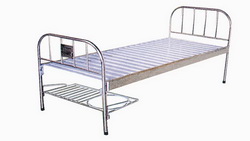Therapeutic medical beds are designed to assist patients who are suffering from immobility issues. Prolonged immobility leads to a number of health problems, including bedsores and ulcers that can further complicate the patient's health condition. Of all the parts of therapeutic medical beds, the most important is the mattress itself. Through its design and features it can offer a series of dynamic therapy features to make the patient more comfortable and assist with their recovery.

Therapeutic medical beds consist of a bed frame and mattress. The frame design will vary depending on whether the therapeutic medical beds will be used in the patient's home or in a hospital environment. In the hospital environment the frames need to be easy to move so the patient can be moved to various different locations easily and without discomfort. In the home mobility issues are not such a priority. Therapeutic medical beds come in various different configurations from intensive care to extended care formats and from medical to surgical ward settings.
Core therapeutic medical beds' features
The mattress cover is very important, as it needs to be water resistant and vapor permeable. In order to offer the best pressure redistribution, it should be stretchable in two-ways. A cover is put on top of the mattress and is generally quite loose fitting. It can be attached using zips underneath to reduce the chance of liquid ingress. Both covers need to be flame proof and easily removable for cleaning.
Therapeutic medical beds should come with mattresses that are made of a modular construction with well designed support cells that has the ability to sustain patients who weigh up to a maximum of 250kgs to 300kgs. The objective of the mattress is to provide optimal redistribution of pressure for patients at all times to keep the instance of damaging tissue to a minimum.
The mattress needs to be designed to avoid torso bottoming out. Up to 200mm or 8 inches of height once fully inflated in the section called the non-torso area will achieve this, whilst the mattress supports the patient in the lying or prone position. A heel guard can provide an area of the bed that supports the feet at lower pressure to ensure correct blood circulation for the patient.
Enhanced therapeutic beds' features
It is important to keep the mattress mobile to stimulate the patient and an automatic sensor can achieve this, without requiring human intervention every 2 hours to move the patient's position. Sensors work in combination with an automated pumping mechanism to provide continuous readjustment of the cell pressures. Having heel cells available, nursing staff can set the mattress to zero pressure in certain areas for vulnerable patients, like those suffering from existing wounds or ischemia.
Therapeutic medical beds in the powered support surface configuration can be transformed into a static sealed mattress for a number of hours. This is important when the patient needs to be transported from one location to another, as the static surface is necessary for patient comfort during transportation, moving and handling and nursing procedures. Furthermore, it will provide correct support if there is a power failure.
